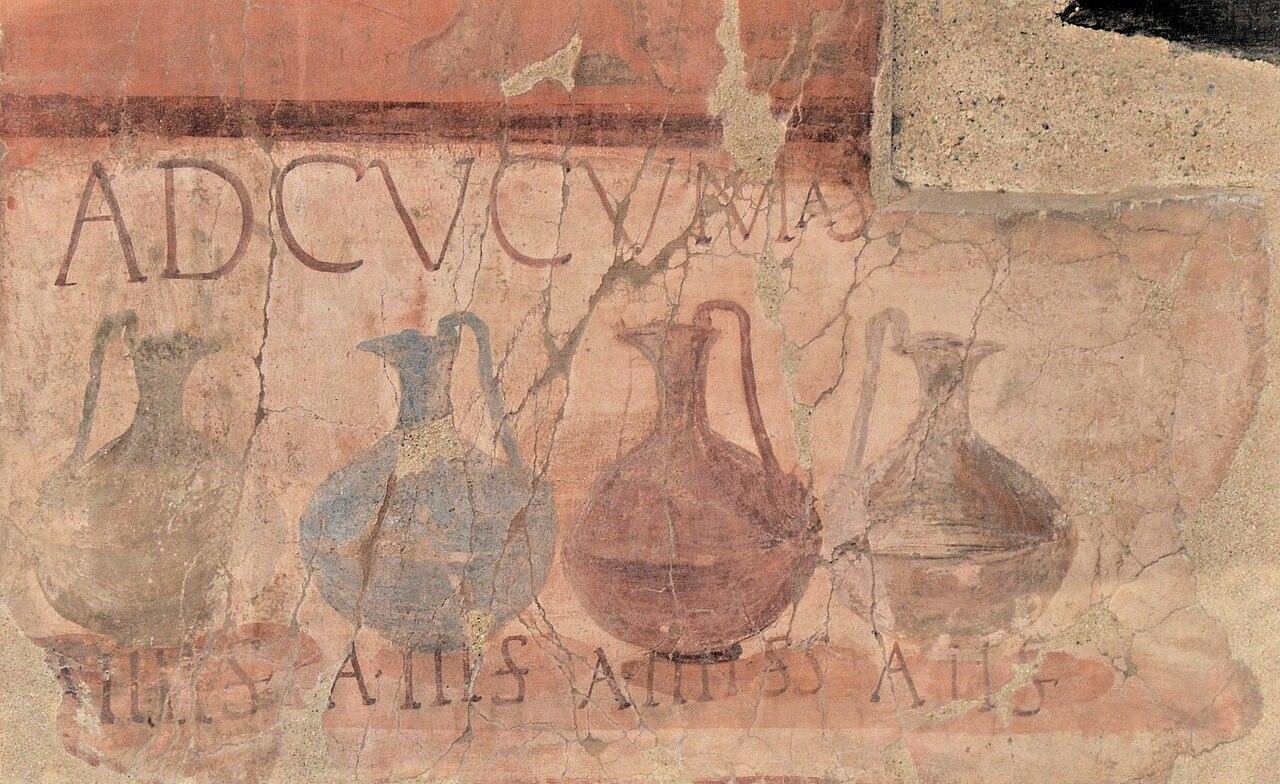Archaeologists have shed new light on the production techniques of Roman wine, including how it looked, smelled and tasted over 2,000 years ago. The study, published in the journal Antiquity, challenges long-standing ᴀssumptions about Roman winemaking.
 An ancient Roman advertisement for wine. Credit: Carole Raddato, CC BY-SA 2.0
An ancient Roman advertisement for wine. Credit: Carole Raddato, CC BY-SA 2.0
Led by Dr. Dimitri Van Limbergen from Ghent University and Dr. Paulina Komar from the University of Warsaw, the research focused on Roman clay jars called dolia, essential in the production, fermentation, storage, and aging of wines during the Roman period. By comparing these dolia with contemporary wine production vessels still in use, the study aimed to unravel the mysteries of ancient Roman winemaking.
One noteworthy aspect highlighted by the researchers is the role of the dolia’s shape in shaping the characteristics of the wine. In a comparative study with modern Georgian winemaking, where clay vessels known as qvevri are used, parallels were discovered in the methods employed. The qvevri’s narrow base, similar to the dolia, served to limit contact between grape solids and maturing wine, resulting in a distinctive orange hue highly prized in ancient times.
Dr. Van Limbergen emphasized the significance of identifying unexpected parallels between ancient and modern winemaking. He stated, “The value of identifying, often unexpected, parallels between modern and ancient winemaking lies in both debunking the alleged amateurish nature of Roman winemaking and uncovering common traits in millennia-old vinification procedures.”
The study challenges preconceived notions about Roman winemaking, suggesting that the Romans possessed advanced knowledge and techniques. The dolia, buried in the ground, allowed for controlled temperature and pH, encouraging the formation of surface yeasts and a compound called sotolon. This imparted a slightly spicy flavor to the wine, accompanied by aromas of toasted bread and walnuts.
In contrast to modern industrial winemaking that predominantly utilizes metal containers, the porosity of clay vessels like dolia facilitated oxidation throughout the fermentation process. The mineral-rich nature of the clay introduced a drying sensation in the mouth, a characteristic favored by Roman palates. Adjustments in the dolia’s shape, size, and clay composition, coupled with innovative storage methods, demonstrated the Romans’ significant control over the final product.
The variety in winemaking techniques indicates the Romans’ proficiency in altering the taste and aroma of their wine, achieved by modifying the dolia’s shape and storage methods.
Wine, deeply embedded in all aspects of Roman life, played a crucial role in society, culture, and the economy. Contrary to the belief that most Roman vinification was ‘white’ in modern terms, the study suggests that grapes, regardless of their color, underwent red-wine vinification, contributing to the wide spectrum of colors observed in ancient wines.
The dolia, far from being mundane storage vessels, were highly specialized containers with precise engineering contributing to the diverse organoleptic characteristics of the wines.
More information: Van Limbergen D, Komar P. (2024). Making wine in earthenware vessels: a comparative approach to Roman vinification. Antiquity. 1-17. doi:10.15184/aqy.2023.193





